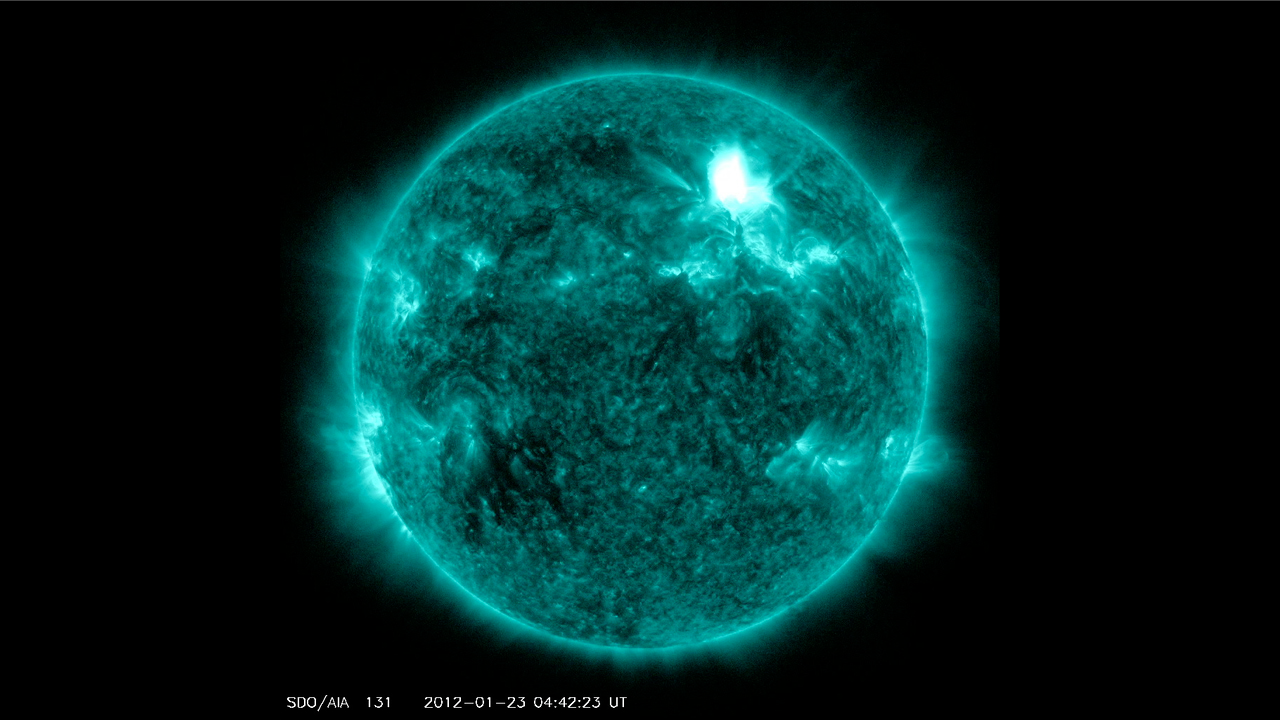Solar Fury
On January 22, 2012, the sun erupted with a solar flare, a coronal mass ejection, and a burst of highly energetic protons known as solar energetic particles. The solar flare was only medium in size. But the other two events packed quite a punch creating the most intense solar radiation storm since 2003. Within minutes of the eruption, solar particles swirled into the Earth's magnetosphere—the protective envelope that shields our planet from the sun's powerful rays. Dazzling auroras electrified the night sky as the coronal mass ejection raced behind the flare at almost 1,400 miles per second and hit Earth within 36 hours. For three days the storm degraded radio transmissions at high latitudes, forcing some airplanes flying polar routes—where pilots rely exclusively on radio navigation—to be rerouted. Watch the video below for multiple views of the eruption as captured by sun-observing satellites.

A solar storm lashes Earth as the sun's activity intensifies.
See footage of the solar flare imaged at two different wavelengths followed by the coronal mass ejection.

NASA's Solar Dynamics Observatory satellite captured this close-up of the flare, shown here in the extreme ultraviolet spectrum.

The coronal mass ejection sprays solar particles, as seen in this sequence captured by the NASA/ESA Solar and Heliospheric Observatory.

An astronaut aboard the International Space Station captured this photo of auroras glowing above the Midwest on Jan. 25, 2012.
For More Information
See NASA.gov
Credits
Please give credit for this item to:
NASA's Goddard Space Flight Center
-
Video editor
- Kayvon Sharghi (USRA)
-
Producers
- Scott Wiessinger (USRA)
- Genna Duberstein (USRA)
-
Writer
- Karen Fox (ADNET Systems, Inc.)
Release date
This page was originally published on Tuesday, February 21, 2012.
This page was last updated on Wednesday, May 3, 2023 at 1:53 PM EDT.
